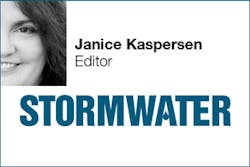If you look at the headlines from across a smattering of local news outlets in almost any given week, you’ll probably find something about stormwater fees. Often, the story is from a small city or town that is just considering a stormwater utility or fee for the first time, and all too often, like this one, it reports that the fee was voted down.
This shouldn’t be surprising news to anyone who’s been involved with starting up a stormwater utility. Although they’ve become more common over the last few decades, many people still object to paying for stormwater services, or to paying what in some places is referred to—inaccurately—as the “rain tax.” In his article “CSI: Utility” for Stormwater magazine, Andy Reese points out 10 common reasons new utilities fail. There are a whole variety of reasons, but several have to do with breakdowns in communication—to the public, to the ratepayers, and to local elected officials. “Some of these utilities were challenged legally in court but upheld. All were challenged in the more exacting court of public acceptance,” he writes.
An organization in Canada is echoing that thought, arguing that the clearer you can be about why people are paying a specific amount, the less likely they are to complain. The University of Ottawa think tank Sustainable Prosperity, in a new report, advises against basing the fee on something like property value or—as is commonly done when the stormwater bill is piggybacked onto a water bill—on water consumption. It also advises against a one-size-fits-all fee, or even one based on property type, such as a set amount for all single-family residences. Instead, the report says, the fee should be based on the stormwater services each property actually uses.
That means more work for the city, but fortunately these individualized rates are easier to calculate than they once were, with integrated GIS databases showing the amount of impervious surface on each parcel. Giving property owners credit for stormwater mitigation measures—even down to the level of rain gardens on individual homeowners’ lots, where feasible—gives people a greater sense of fairness in the process, and a feeling of having more control over what they’re going to pay.
Have you been involved in setting up a stormwater utility, or in changing the rate structure for an existing one? What was your strategy and your timeline for helping the public understand the process?
Continuing Education
Here are some upcoming webinars—two of them free!—from Forester University.
Designing for High-Flow with Concrete-Enhanced Synthetic Turf—Free Webinar
September 27
Speaker Bradford Cooley, P.E., discusses applications of concrete-enhanced synthetic turf (CEST) revetment systems, design and installation best practices, hydraulic and non-hydraulic performance results, and how you can implement CEST at your site to improve performance and reduce maintenance costs. Sponsored by Watershed Geo.
Click here for more information and to register.
Specifying Engineered Soils for Sustainable Vegetation—Free Webinar
October 26
Returning speaker Marc S. Theisen, CPESC, CPSWQ, CESSWI, discusses how to specify Engineered Soil Media (ESM) as a cost-effective alternative to topsoil, compost, and other conventional organic soil amendments. Topics include testing your soil for organic content, selecting proper ESM application rates, calculating the cost benefits, and applying the best practices from real-world case studies and research. Sponsored by Profile Products LLC.
Click here for more information and to register.
Fire and Rain: Post-Fire Erosion Control Master Class Series
October 6 – November 3
This five-part master class series covers post-fire erosion control applications, techniques, and best practices, including post-fire hazard assessment, secondary disaster impacts, watershed hydraulic changes, remediation access and funding, post-fire BMP selection and implementation, accountability issues, and emergency measure implementation. The five live and on-demand lectures are followed by open Q&A sessions. Speakers include Mike Harding, Julie Etra, Ian Paton, Andrew Earles, and Kathleen Harr.
Click here for more information and to register.
About the Author
Janice Kaspersen
Janice Kaspersen is the former editor of Erosion Control and Stormwater magazines.


